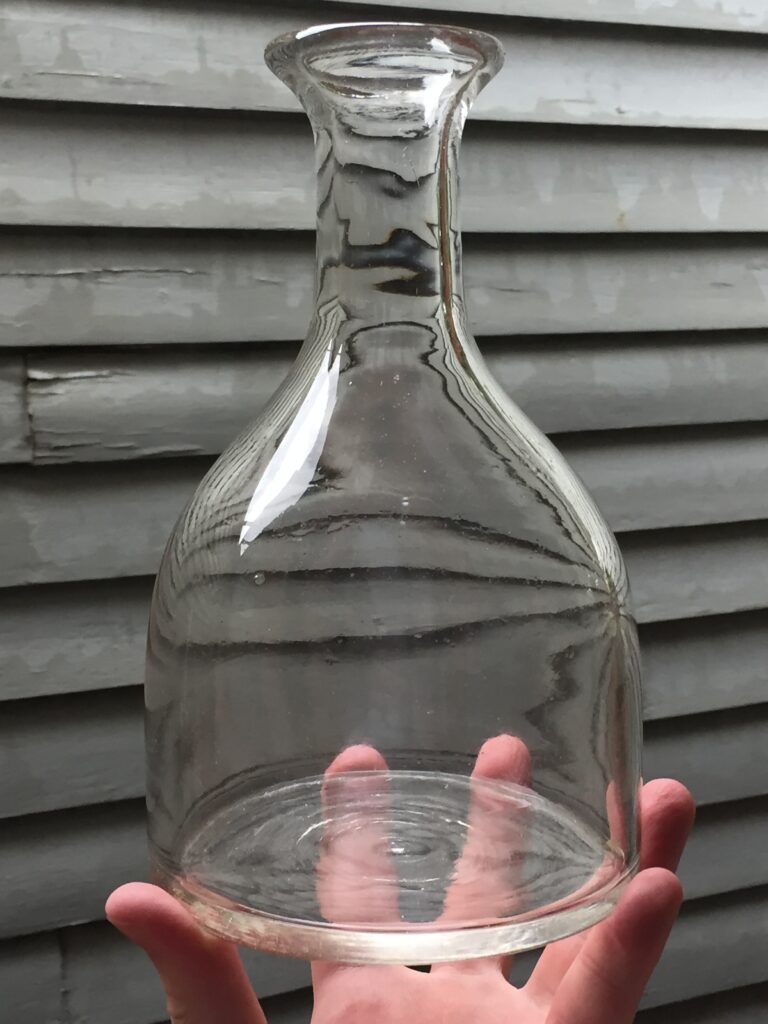
Today I made a very exciting discovery—a Crown Crystal bottle.
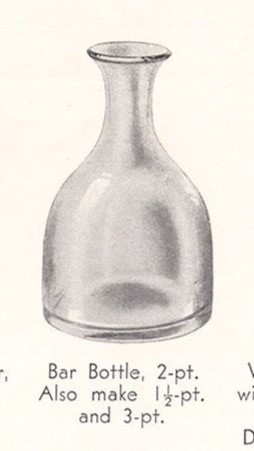
It shows up in the 1932 Crown Crystal catalogue called a Bar Bottle. The example I have, and the one shown in the 1932 catalogue, doesn’t have a cork or stopper.
Crown Crystal also sold these bottles to the NSW Railways for years for use in their train carriages for refreshments.
These were fitted with a metal and cork stopper.
These kept dust and flies out of the bottle, and were chained to the neck of the bottle.
The bottles, and shared drinking glass, were mounted in brackets at the end of the carriage.
The bottles used by the railways were etched with the initials of the various railway operators, as the bottles were replaced during the lengthy service life of the rolling stock.
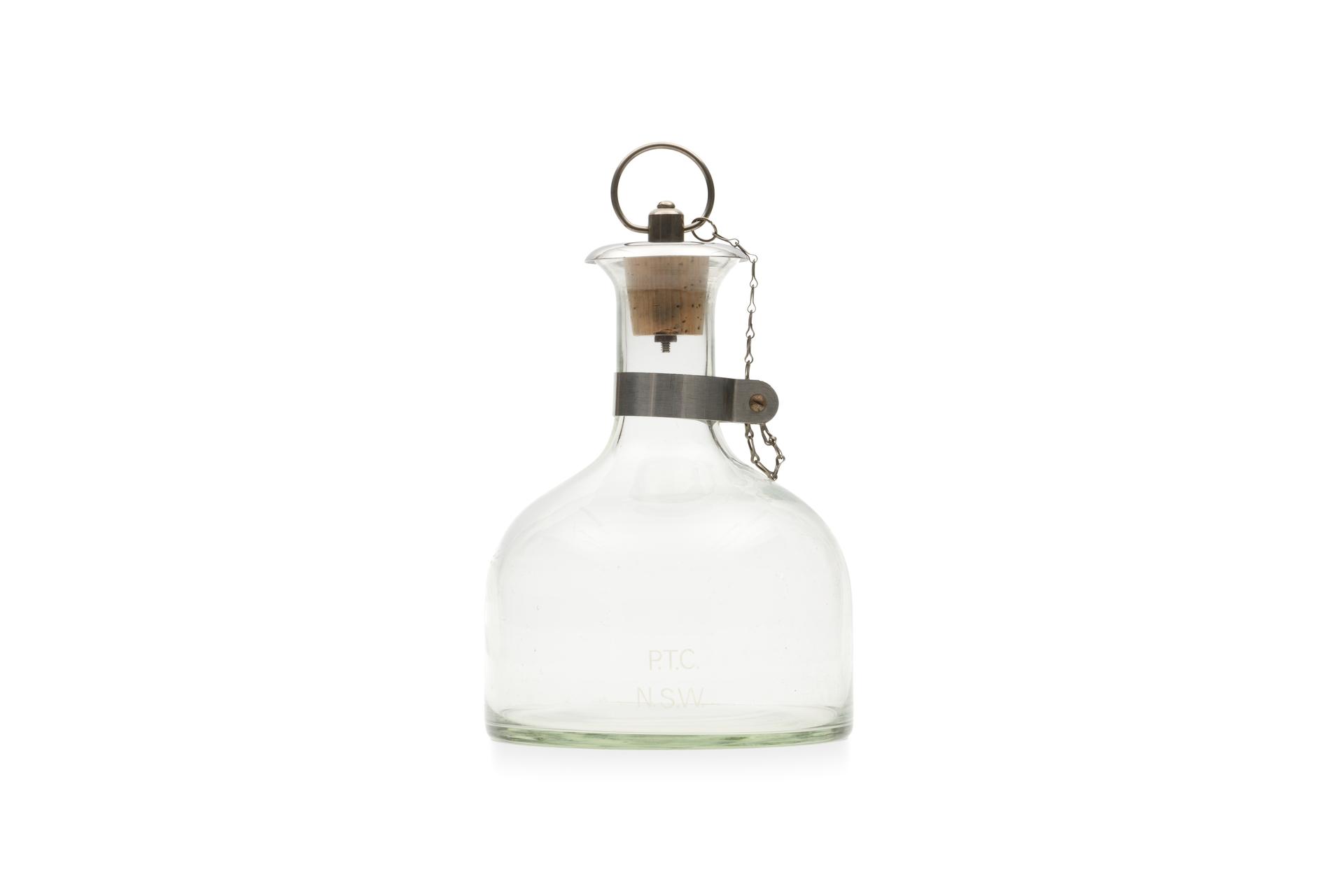
The Powerhouse Museum has examples of these bottles—a civilian one without stopper or engraving, and an example engraved “N.S.W. G.R.” with stopper, both from the Crown Crystal collection.
They also have an example donated by a Railway employee marked “P.T.C. N.S.W.” complete with chain.
The P.T.C. existed from 1972 to 1980 and I believe may have been the last operator to use such bottles.
Edit: I have found a photo of one of these bottles etched
“S.R.A. N.S.W.” The State Rail Authority took over Rail operations from the P.T.C. in 1980.
The use of these bottles aboard NSW trains make an appearance in the 1971 film Wake in Fright, when the fish-out-of-water protagonist takes a country train from his outback teaching post to a fictionalised version of Broken Hill.
His use of the shared water initially sets him apart from his fellow passengers, who are all sharing a beer.
The three following stills from the Wake in Fright show the bottle in use and the mounting brackets.
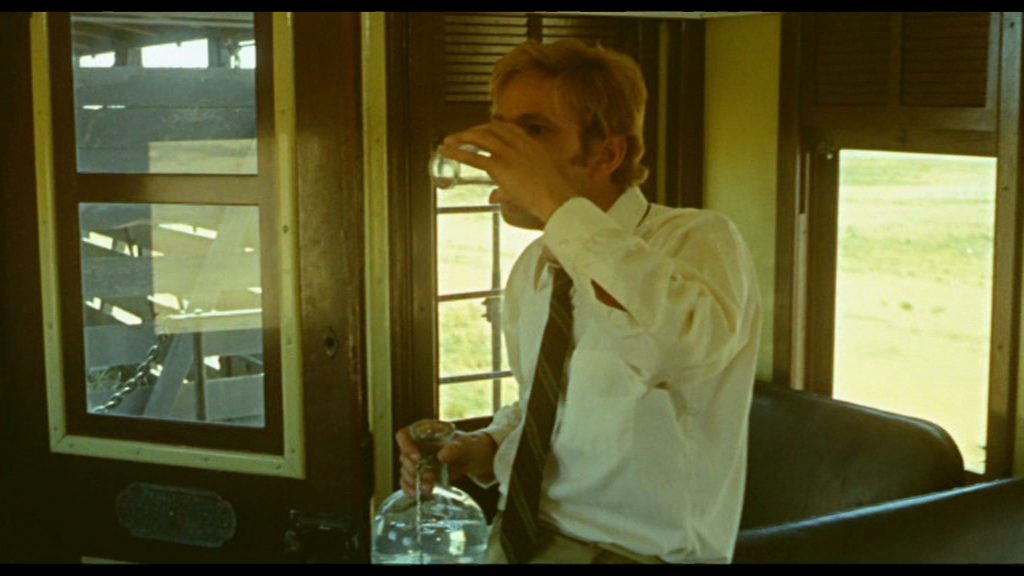
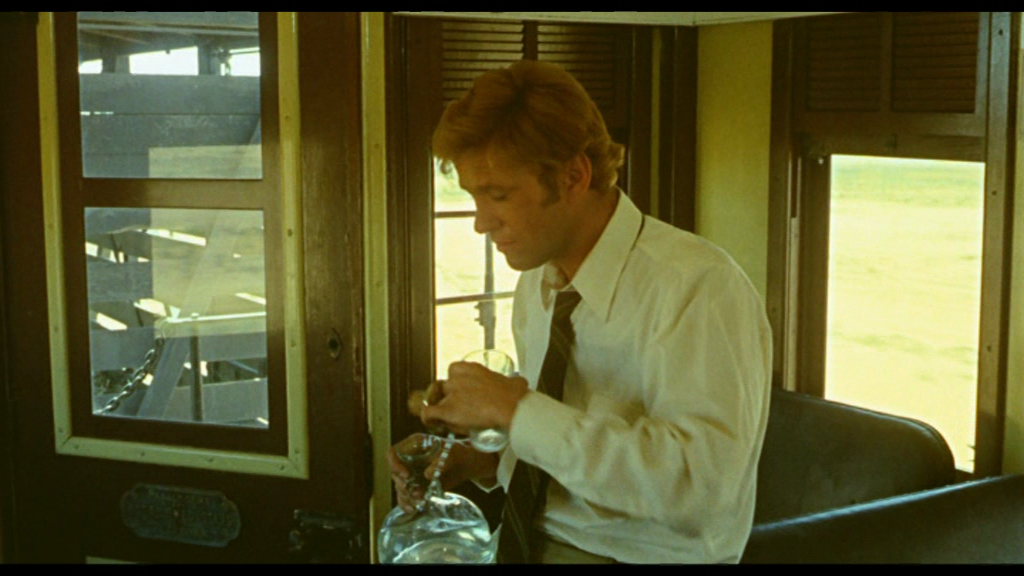

I’ve been keeping an eye out for one of these for a while, and while I am interested by the railway connection I appreciate the bottle primarily for itself.
Considering that the railway marked bottles with stopper (and sometimes bracket) go for a fair amount of money, I’m glad to have found a representative example.
The design is elegant in it’s simplicity. I especially like the fact that it is not cut glass, but simply blown.
Like most Crown Crystal items prior to the 1960s, the designers are not known or recognised, but their work speaks for itself.
One reply on “Crown Crystal bottle”
Wow! Fantastic find and historic description. Great to know.